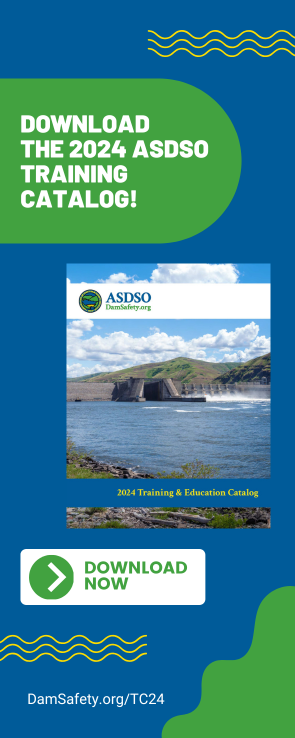
How to Conduct a Successful PFMA - Lessons Learned from Past Successes and Failures: On-Demand
| Potential failure modes analyses (PFMA) was first used in dam safety over twenty years ago. Although thousands of PFMA workshops have been conducted since it was first introduced, the use and application of PFMAs is still mostly limited to larger federal agencies and occasionally by others on larger projects. PFMA is a tool and a framework to evaluate dam and levee safety. It has fundamentally changed the way many now approach assessing and solving dam and levee safety issues. It’s the first question asked by some prior to deciding if actions or expenditures are warranted – “So what’s the potential failure mode?” The PFMA process has evolved over the years with new twists, ideas, and improvements to the process. Still, improvements are needed, some of which have been pointed out in the Oroville Spillway Independent Forensic Team Report. Preparation, process, and team composition remain key factors in the success or failure of a PFMA. This webinar will provide examples (both good and bad) and some suggested guidance.
Key takeaways: 1. A brief overview of the evolution of the PFMA process, 2. A snapshot of where we are today in conducting PFMAs (the good, the bad, and the ugly), 3. A discussion of common pitfalls in preparing for and executing PFMAs, 4. A summary of some of the essential elements of a successful PFMA, and 5. Some thoughts on the future of PFMAs and how they might be scaled down for smaller projects. |

Douglas D. Boyer, P.E., CEG
Chief, RIDM Branch
Mr. Douglas Boyer is a civil engineer and engineering geologist with 35 years of experience in dam engineering and dam safety. He currently serves as the Chief, Risk-Informed Decision Making Branch for the Federal Energy Regulatory Commission (FERC). Prior to joining FERC in 2016, he held positions with the US Army Corps of Engineers Risk Management Center and Bureau of Reclamation in Denver. He also served as the Chief, Dam Safety Branch, Department of Water Resources for the State of Colorado. Prior to federal employment, he had nearly 15 years of consulting experience. Mr. Boyer has a Bachelor of Science degree in geological sciences and a Master of Science degree in civil engineering. Mr. Boyer is a licensed professional engineer, professional geologist, and certified engineering geologist.
- Webinar Objectives
- PFMA Overview
- What is a PFMA?
- Benefits of PFMA
- Limitations of a PFMA
- What Does a Successful PFMA Look Like?
- Overview of the PFMA Process
- Essential Elements of a PFMA and Lessons Learned
- Workshop Preparation and Supporting Information
- Participant Roles and Responsibilities
- i. Facilitation
- ii. Note Taker
- iii. Subject Matter Experts
- iv. Owner’s Representatives
- v. Others
- Environmental Factors
- Identifying and Describing PFMs
- Evaluating and Classifying PFMs
- Identifying Appropriate PFM Actions
- Documentation
- Some Examples
- The Future of PFMA
- What about Smaller Projects?
- Summary of Lessons Learned
- Available PFMA Resources Comments/Questions/Answers


